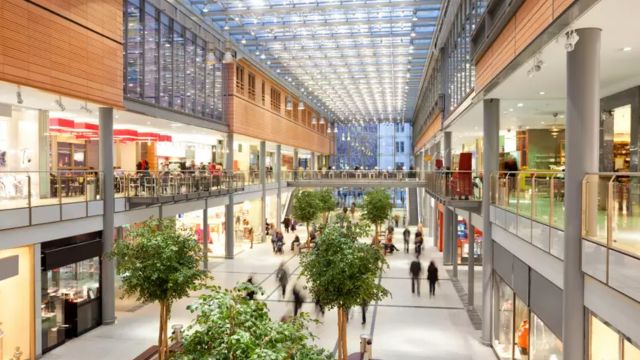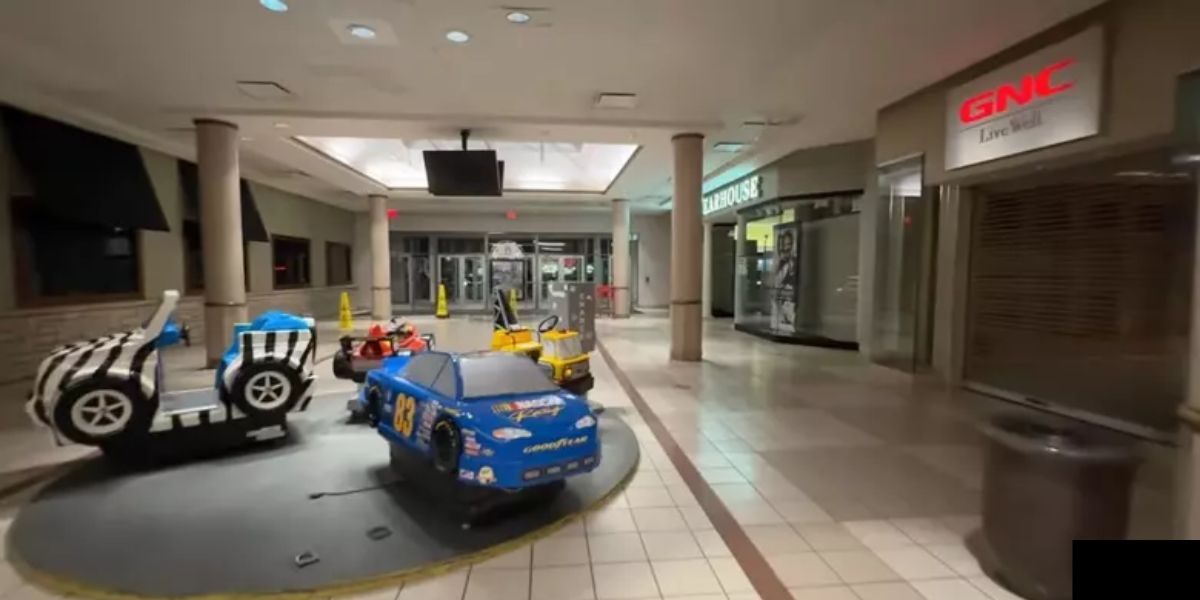Nestled in the heart of Upstate New York lies a once-thriving shopping destination now abandoned and left in eerie silence.
The mall, which was once bustling with the sound of footsteps, chatter, and the hum of fluorescent lights, has become a ghostly relic of the past.
Today, it stands largely vacant, a haunting reminder of retail’s shifting landscape and the changing dynamics of consumer culture.
A Glimpse into the Past
This particular “ghost mall” was once a retail hub for the surrounding community, featuring well-known stores, food courts, and entertainment options. Its wide hallways were once filled with shoppers in search of the latest fashion trends, gadgets, or an afternoon snack. But over time, as consumer habits changed, online shopping surged, and larger retail chains shuttered, the mall slowly fell into disrepair.
Shops closed one by one, leaving empty storefronts and hollow spaces. The mall’s management struggled to keep it afloat, but the inevitable happened: it became a shadow of its former self, until it was all but abandoned. What remains today is an eerie, almost surreal atmosphere, as if the mall were frozen in time.
The Silent Halls
As you step into the vast, empty corridors of the mall, the silence is almost deafening. The once-crowded spaces now echo with the faintest sounds, like the creak of the building settling or the whisper of wind through broken windows. Faded signage still hangs above some stores, relics of a time when they were full of life and activity.
The overhead lights flicker occasionally, casting long shadows on the faded linoleum floors. Here and there, forgotten remnants of the past are scattered—an abandoned shopping cart, a piece of signage left behind, or even old clothing tags still stuck to walls or shop windows. It feels as though the mall was abruptly abandoned, with people leaving in a hurry, never to return.
The Ghostly Stores

Walking through the mall, you can’t help but notice the remnants of once-thriving stores. Some are completely empty, their windows either boarded up or covered in grime. Others still contain leftover furniture, mannequins in disarray, and dusty shelves—silent monuments to a time when they were filled with customers trying on clothes or browsing through the latest gadgets.
New York Hit by Another National Chain’s Store Closures
The food court, which was once the social heart of the mall, now stands as a haunting, desolate space. The once-colorful signs advertising fast food and snacks have faded into obscurity. The tables and chairs are abandoned, with only a few scraps of paper or fast food wrappers littering the floor. The quiet hum of mall music that once played overhead is now replaced by a stillness that hangs heavily in the air.
The Deteriorating Architecture
Over the years, the mall’s architecture has started to show signs of wear. The once-shiny floors are now scuffed and cracked, while the walls are marked with stains and peeling paint. In some areas, the ceiling tiles have fallen, and broken windows allow sunlight to spill in, casting a strange glow over the interior. The neglected structure, now showing its age, adds to the haunting atmosphere.
Outside, the parking lot, once packed with cars, is nearly empty, save for a few scattered vehicles. Weeds have begun to overtake the spaces, and the pavement is cracked from years of neglect. The mall, once a symbol of modern consumerism, now stands as an eerie reminder of the impermanence of such places.
The Rise of Online Shopping
The decline of this mall is part of a larger trend seen across the United States. As online shopping grew in popularity, traditional brick-and-mortar malls faced immense challenges. More and more shoppers turned to e-commerce giants like Amazon for convenience and competitive pricing. Large chains, which once anchored malls and drew in foot traffic, began closing their doors, unable to compete with the ease of online shopping.
The mall’s demise was not just a result of the rise of online shopping, but also shifting cultural attitudes toward shopping and entertainment. Once, malls were seen as social gathering places, but as entertainment and shopping habits evolved, malls became less relevant. This shift has led to the slow but steady decline of many malls across the country, particularly in smaller towns and suburbs.
What’s Next for the Ghost Mall?
While some ghost malls have been repurposed into mixed-use spaces, entertainment complexes, or even residential units, this particular mall’s future remains uncertain. Local officials and community members have expressed interest in revitalizing the area, but the process of transforming such a large and aging structure into something new is no small feat.
As with many abandoned malls, there are challenges in repurposing these spaces. The cost of renovating the buildings, finding new tenants, and attracting visitors can be daunting. Still, the possibility of reinvention looms large. In some cases, these abandoned shopping centers have found new life as art installations, tech hubs, or even indoor farms, bringing a new purpose to the old spaces.
The empty mall in Upstate New York serves as a poignant symbol of the changing retail landscape and a tangible reminder of the fleeting nature of consumer trends. As you walk through its silent halls, it’s impossible not to feel a sense of nostalgia for a time when the mall was full of life. Yet, even in its current state of abandonment, the mall continues to hold a certain beauty—a ghostly allure that draws visitors and photographers eager to capture a piece of a forgotten era.
In the end, whether it remains standing as a relic of the past or is reborn into something new, the ghost mall is a reflection of how our shopping habits and communities are constantly evolving, and how places, like people, can fade away before they are fully appreciated.




